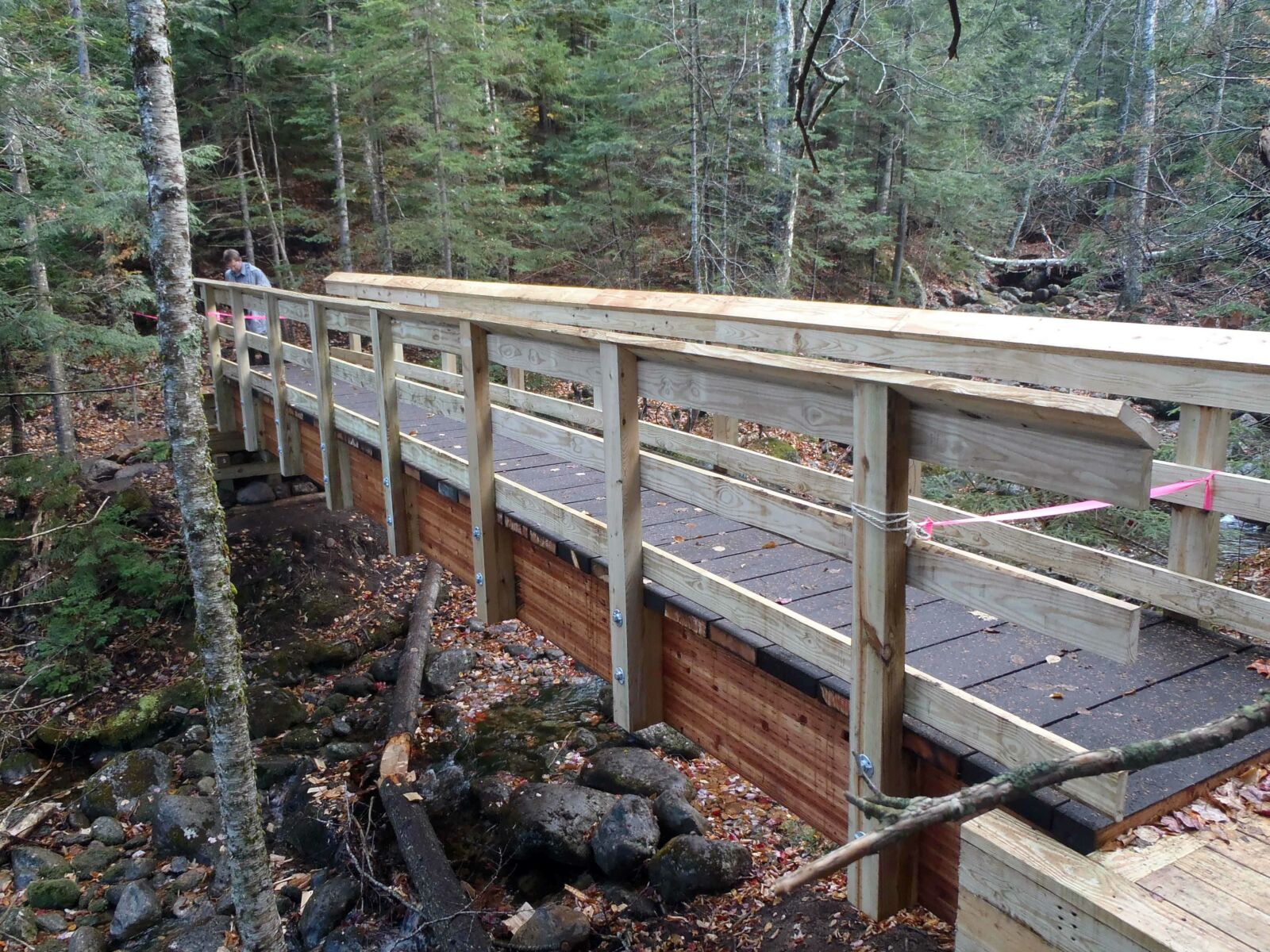With cooperation with the White Mountain National Forest and assistance from the National Forest Foundation Matching Awards Program, the White Mountain Professional Trail Crew constructed a 40-foot bridge on the Nineteen Mile Brook Trail in fall of 2015. This installation of this bridge ends a four-year absence; the previous bridge was washed out in Tropical Storm Irene’s flooding, and hikers had been forced to rock-hop the river on this high-use trail.
As is with most trail construction projects in the Whites, mother nature always has a say in the matter. We enjoyed reasonably good weather for most of the project, but driving drift pins and setting timber members proved to be challenging in the rocky soil.
With the abutments built and the approach from either side modified we waited until the end of September to airlift our three 1400-pound glu-lam beams into place and bring in decking and handrail material. When airlift day came, we were relieved to discover our measurements came out just right, and we landed the beams in place on the abutments with just a few inches leeway, and settled them nicely and a four-pound sledge.
Because the critical funding we received through the NFF’s grant, we now have a safe, user-friendly trail that should be unaffected by any future flooding.
Now that the decking material, hardware, and tools were on site the crew made quick work of installing the handrails, cutting and fastening the decking, and finishing the approaches.
Additional work went into two relatively short but significant trail relocations on the trail as well. With the banks of the Nineteen Mile Brook unable to contain the rush of rain runoff from Tropical Storm Irene, the brook had jumped the banks in several locations, causing erosion and gulling beyond repair in sections of the old trail.
Both the Professional Trail Crew and Volunteer Trail Crews from Camp Dodge worked on both relocations, one of which started right from the parking lot, the second not much farther up trail -- both relos are below the site of the new bridge.

We moved a lot of rock was moved to build rock staircases and replace roughly a foot of duff and organic material in effort to provide a more durable tread surface for users. Both relos likely won't feel the effects of high water if we receive another Irene-like event as they are placed on much higher terrain than the old sections were originally.
Because the critical funding we received through the NFF’s grant, we now have a safe, user-friendly trail that should be unaffected by any future flooding.
Click here to learn more about the work of Appalachian Mountain Club.
Click here to learn more about our efforts on the White Mountain National Forest.

